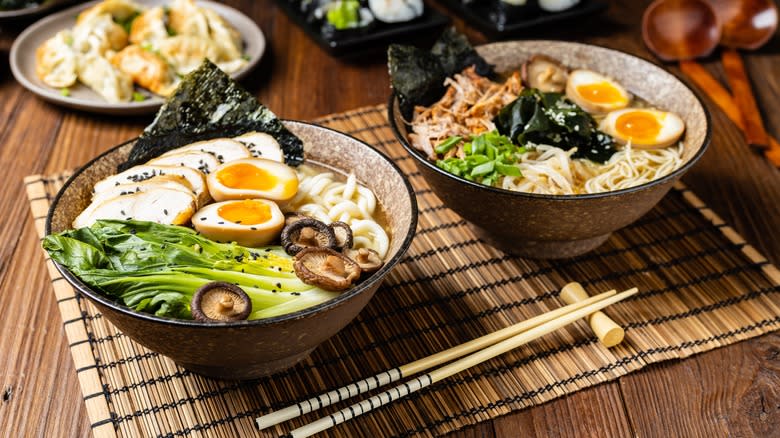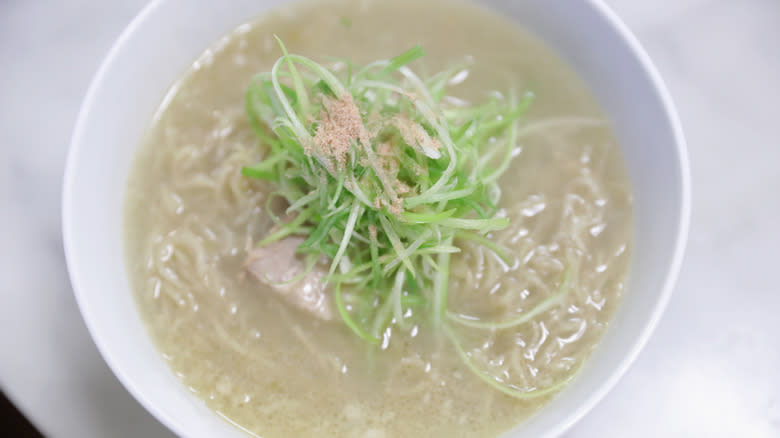Tare Is The Umami-Rich Ingredient You Should Always Add To Ramen

Known for its balance of first-world efficiency and beautiful traditional customs, Japanese culture is perhaps most revered for its cuisine. Umami, the fifth and final taste, was coined by Japanese scientists and plays an important role in most iconic Japanese dishes. Ramen exemplifies the broad scope of umami flavors as well as the delicious complexity of Japanese recipes.
Types of ramen are distinguished principally by the flavor of the broth. Tare is the umami-rich liquid seasoning that's responsible for the broth's flavor. Meaning "sauce" in Japanese, tare is made by steeping ingredients in simmering water to create a concentrated flavor base upon which the broth, noodles, and other ingredients are built. The four main types of tare are shio (salt), shoyu (soy sauce), miso, and tonkatsu, with a base of emulsified bone marrow.
Each type of tare is named for the principal seasoning ingredient to which you'll add other complementary ingredients. Shio tare can take your ramen to the next level and often contains citrus zest and umami-rich kelp, or kombu, to complement the salty solution. Shoyu tare, which should be a staple in your fridge, is often a balanced sweet and savory seasoning that pairs soy sauce with sake, mirin, and sugar. Miso tare is an all-in-one sauce that uses the creamy, funky, almost tangy miso paste simmered with sake, soy sauce, and a dash of sugar. Apart from liquid ingredients, many tare recipes also recommend adding dried mushrooms, MSG, kelp, bonito flakes, and dried fish for even more umami-richness.
Read more: 20 Popular Canned Soups, Ranked Worst To Best
How To Make Tare And Incorporate It Into Ramen

You can make tare ahead of time or alongside the broth for your ramen. For shio and shoyu tare, you will bring the liquid ingredients to a boil, reduce the heat, add any solid ingredients, and simmer for around half an hour. Then, you'll let the mixture cool and pour it through a strainer into a storage container. Since miso paste is already a concentrated ingredient, you don't need to simmer it. Instead, you can add other liquid ingredients, sugar, or even a dash of hot sauce to miso paste in a bowl and whisk to combine.
Tare is the base seasoning for ramen and, therefore, the first ingredient you start with when you prepare each bowl. Ramen is assembled individually as opposed to being one giant pot of soup, so you'll set up a veritable assembly line with tare, broth, noodles, and toppings. You'll add a few teaspoons of tare to each bowl, followed by a cup or two of broth, then noodles, proteins, toppings, and garnishes.
If you have any tare left over, you can use it to season plenty of other dishes. For example, you can use it to marinate fish, pork, red meat, or tofu. You can incorporate it into other soups or saute sauce, or use it as a dipping sauce for dumplings. You could even blend it with fresh aromatics, vinegar, lime juice, and sesame oil for an Asian-style salad dressing.
Read the original article on Tasting Table

